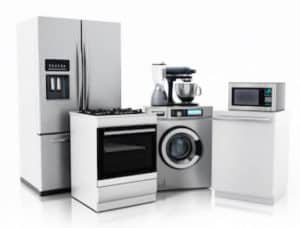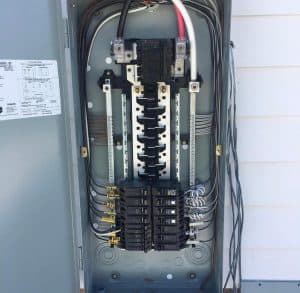 Do you have a dedicated circuit installation for your appliances? A dedicated circuit is a circuit that powers a single device or electrical appliance. It is required by the National Electrical Code for certain critical appliances and stationary appliances. These special circuits cannot handle other devices, appliances, lights, or plugs. In most cases, they are needed for devices with motors to ensure that the starting load is sufficient and to work at maximum power. More importantly, dedicated circuits avoid the inconvenience of overloading the circuits.
Do you have a dedicated circuit installation for your appliances? A dedicated circuit is a circuit that powers a single device or electrical appliance. It is required by the National Electrical Code for certain critical appliances and stationary appliances. These special circuits cannot handle other devices, appliances, lights, or plugs. In most cases, they are needed for devices with motors to ensure that the starting load is sufficient and to work at maximum power. More importantly, dedicated circuits avoid the inconvenience of overloading the circuits.
Overload Protection provided by Appliance Circuits
If a single circuit powers more than one device, there is a possibility that these devices consume more power than the circuit can handle. The result is a tripped circuit breaker or tripped fuse. This is a fairly common occurrence in older-kitchen kitchens installed at a time when the National Electric Code did not provide as many appliances as they would in modern kitchens. This is why dedicated circuit installation is important.
The kitchens are heavily dependent on appliances with motors (mixer, waste disposal, can opener) and heaters (toaster, pizza oven, electric grill). Both types of devices are notoriously heavy users. For example, if you use a toaster and a pizza oven in the same circuit, it is quite common to overcharge the circuit and trip the circuit breaker. This is especially common in an old kitchen with only one or two 15-amp circuits that already feed the fridge and microwave oven.
However, modern kitchens have been installed with at least four and possibly up to six or seven 20-amp circuits, and there is a much lower likelihood of overloading a single circuit, especially because large appliances have their own circuits. This cannot be used by other appliances.
The National Electrical Code requires that any dedicated device or device intended for critical use be powered by its own dedicated circuit to eliminate the possibility of another device tripping the circuit breaker and turning off this critical appliance. These critical appliances include stoves, water heaters, sump pumps, and even refrigerators. If any of these switches trip and you do not know, you might find a flooded basement, a frozen house, no hot water, or a fridge full of rotten food.
Devices that Require Dedicated Circuits
 Here is a list of typical devices that require dedicated circuits. Additionally, your local building authority may specify additional appliances or appliances that require its own electrical circuit. The National Electrical Code, which is reviewed every three years, can also regularly add other devices to this list:
Here is a list of typical devices that require dedicated circuits. Additionally, your local building authority may specify additional appliances or appliances that require its own electrical circuit. The National Electrical Code, which is reviewed every three years, can also regularly add other devices to this list:
- Laundry room outlets
- Bathroom heaters which include vent/fan heater units
- Air Conditioners that include whole house and room
- Sump pump
- Garbage disposal
- Dishwasher
- Microwave
- Dryer
- Washer
- Furnace or heat pump
- Electric water heater
- Electric range or oven/cooktop
- Freezer
- Refrigerator
Testing Dedicated Circuits
The electrical panel of your house must be provided with labels indicating all circuits intended for this purpose.
If you find that any of the above devices are duplicated in a single switch or combined with other devices such as lights or power outlets, contact Professional Electric. This is both a security risk and a real problem. Non-compliant circuits can also be an issue when it comes to selling your home.